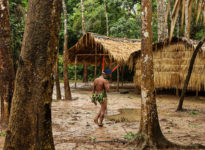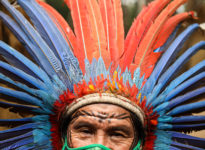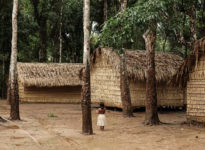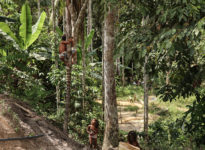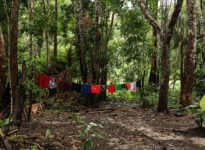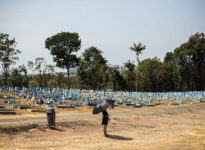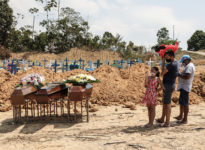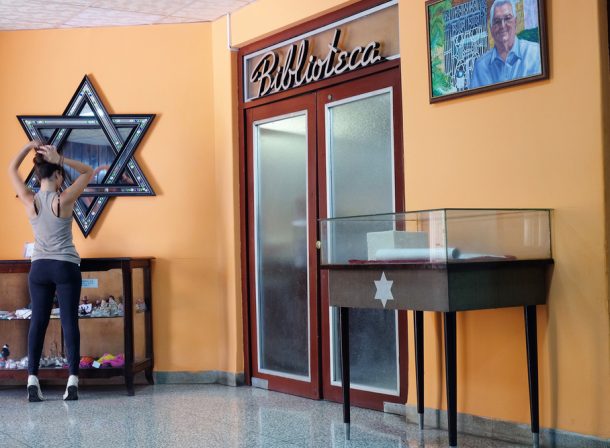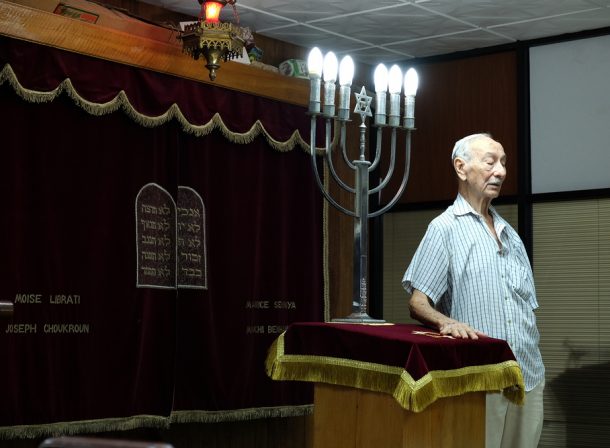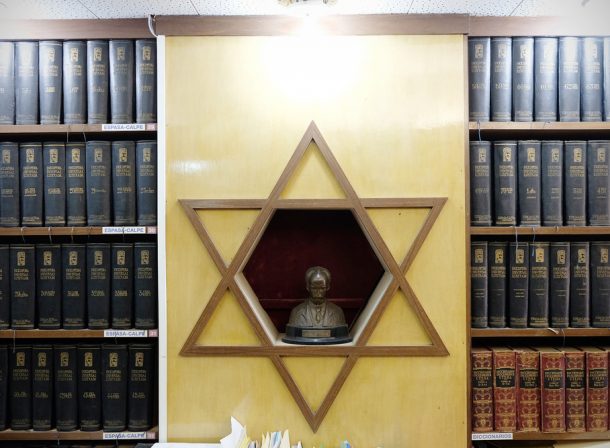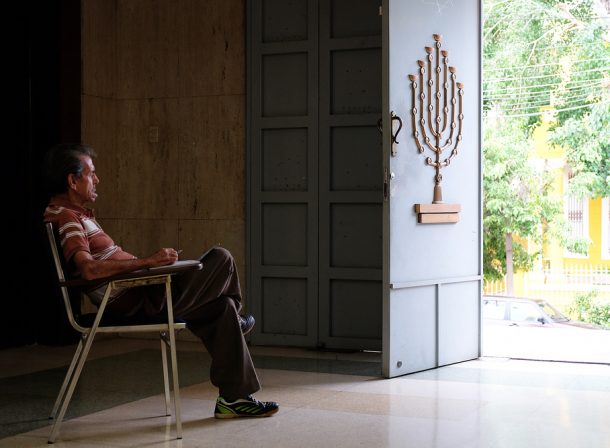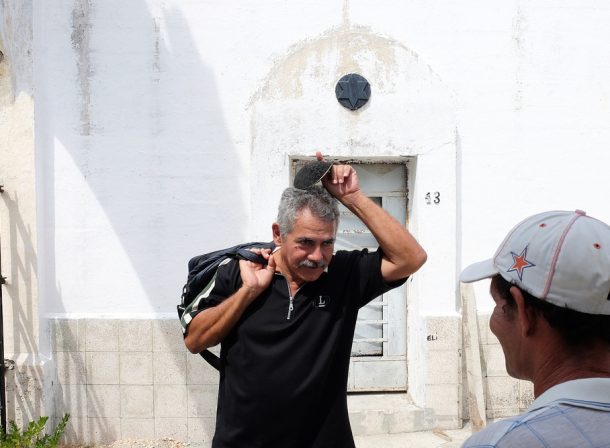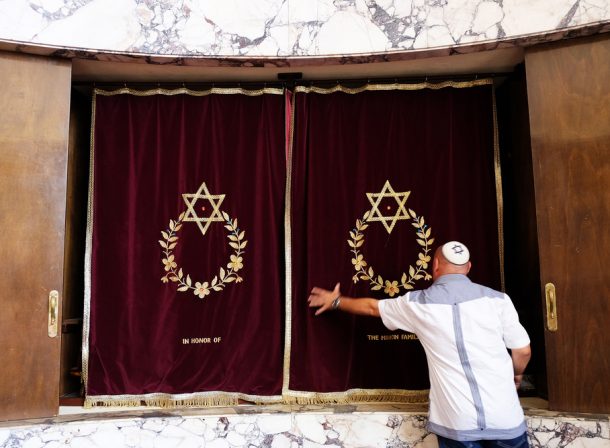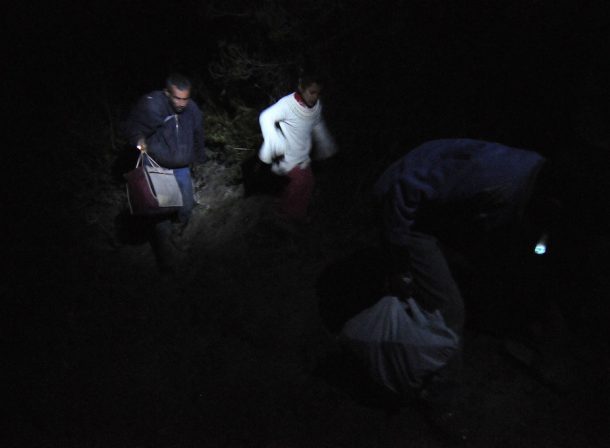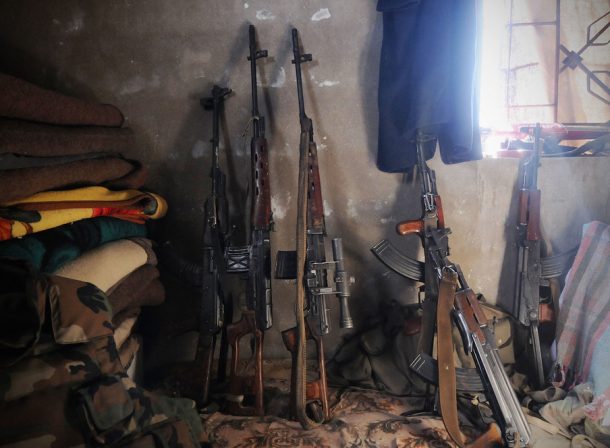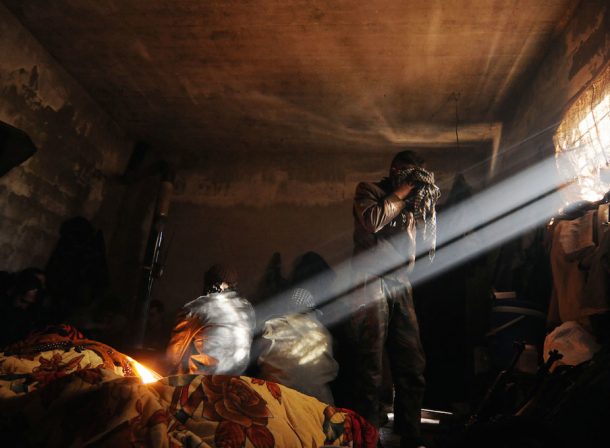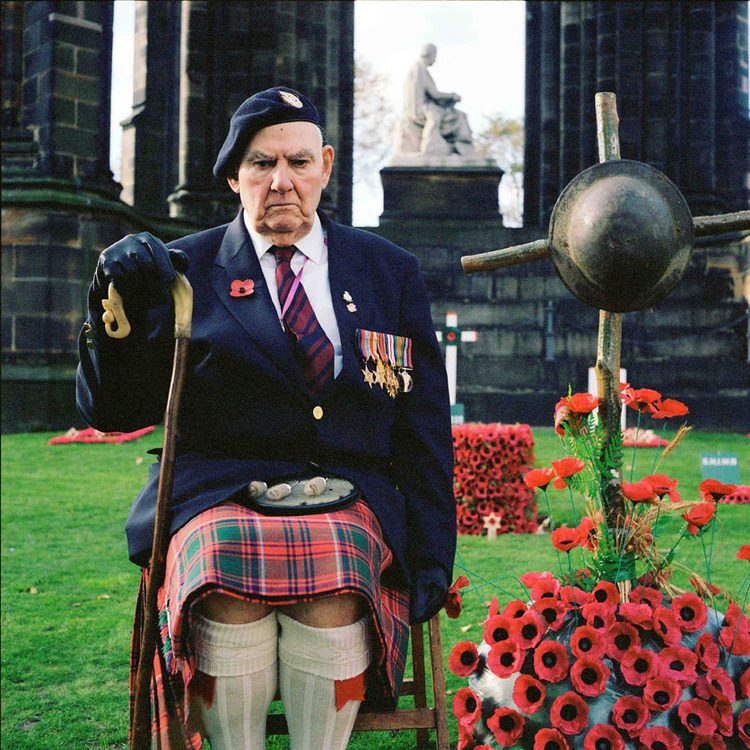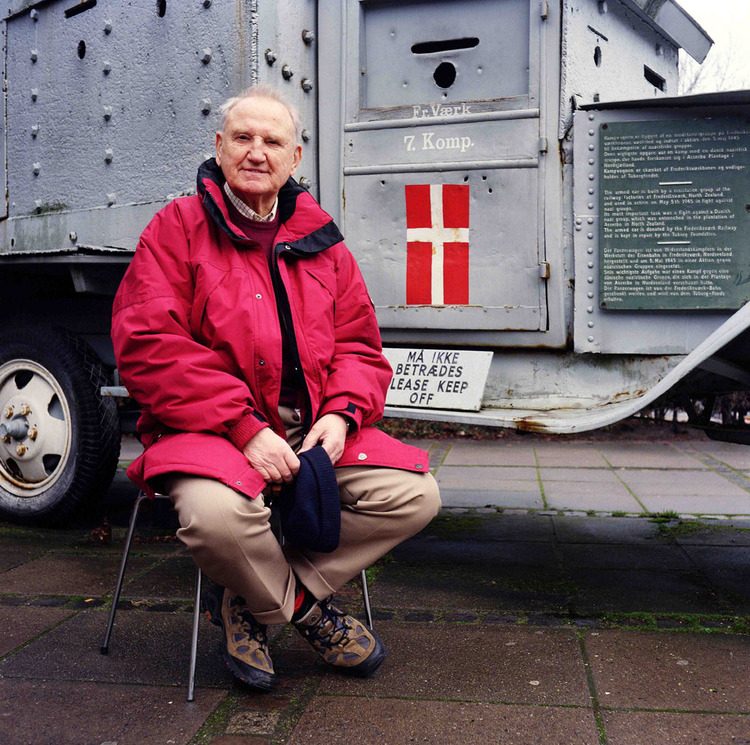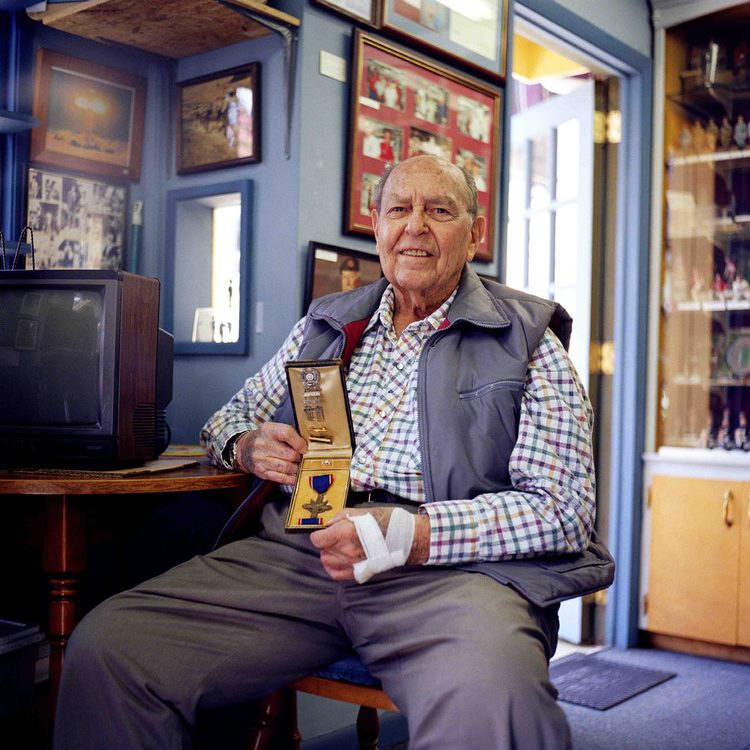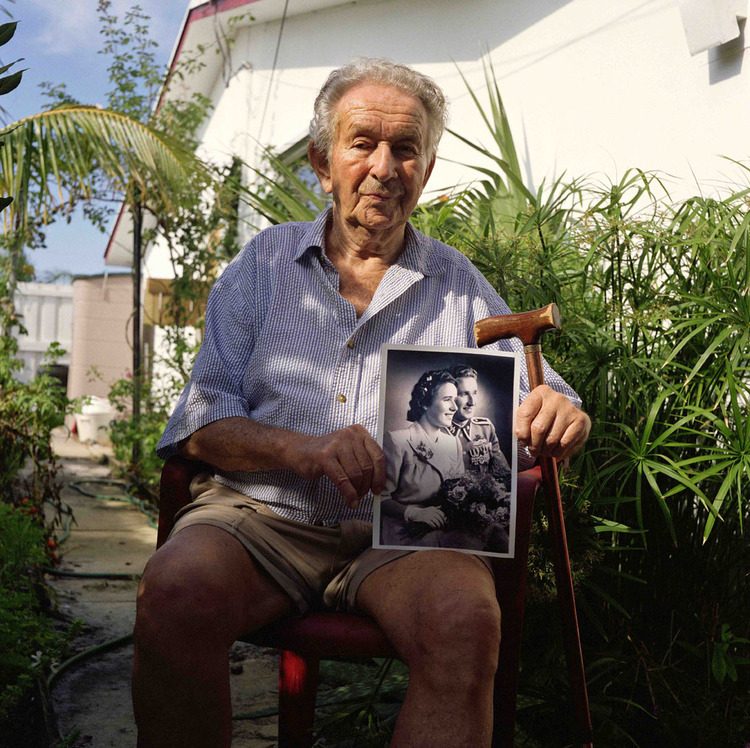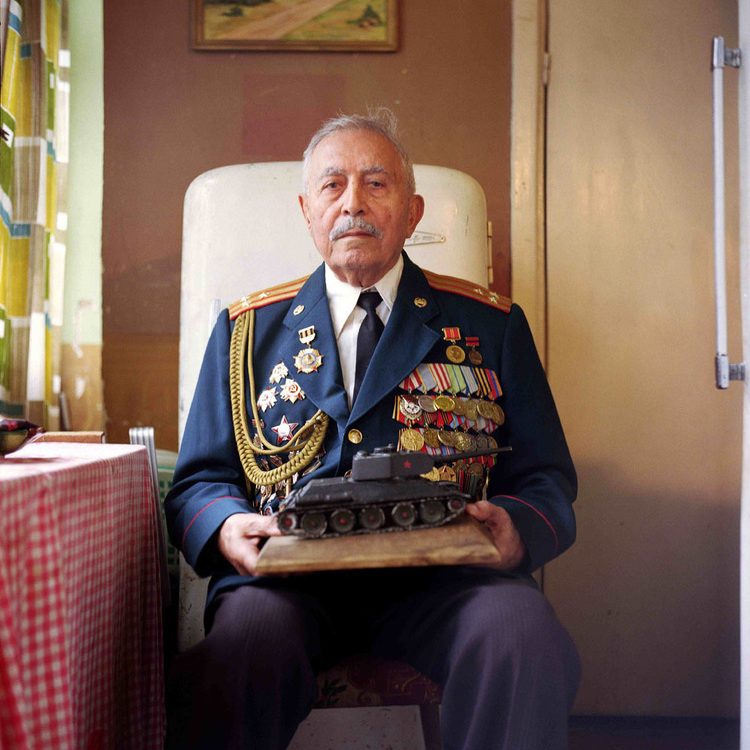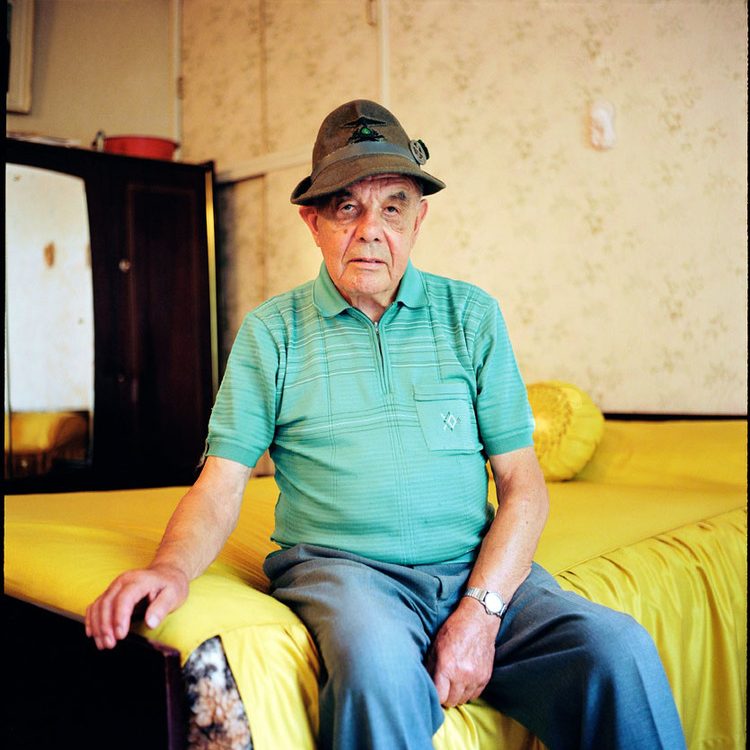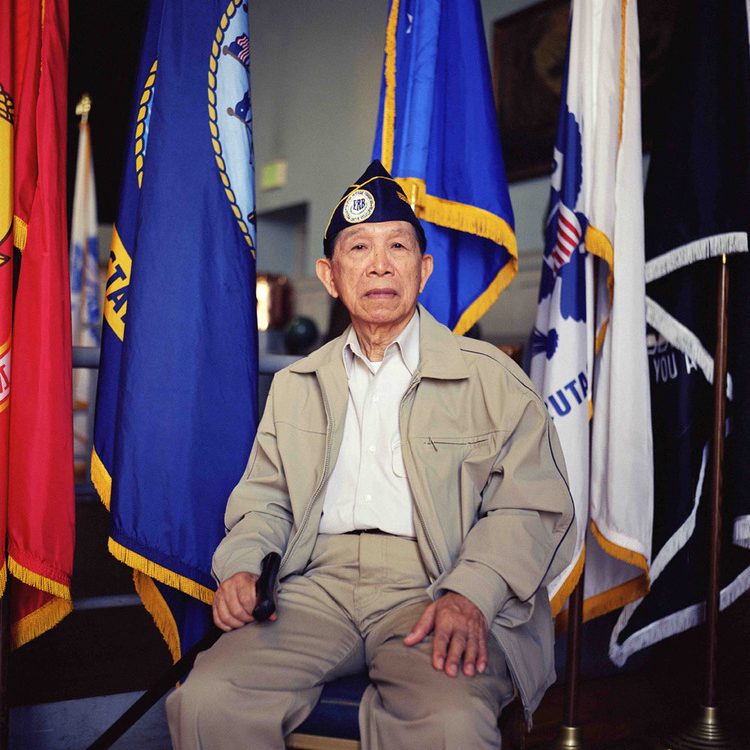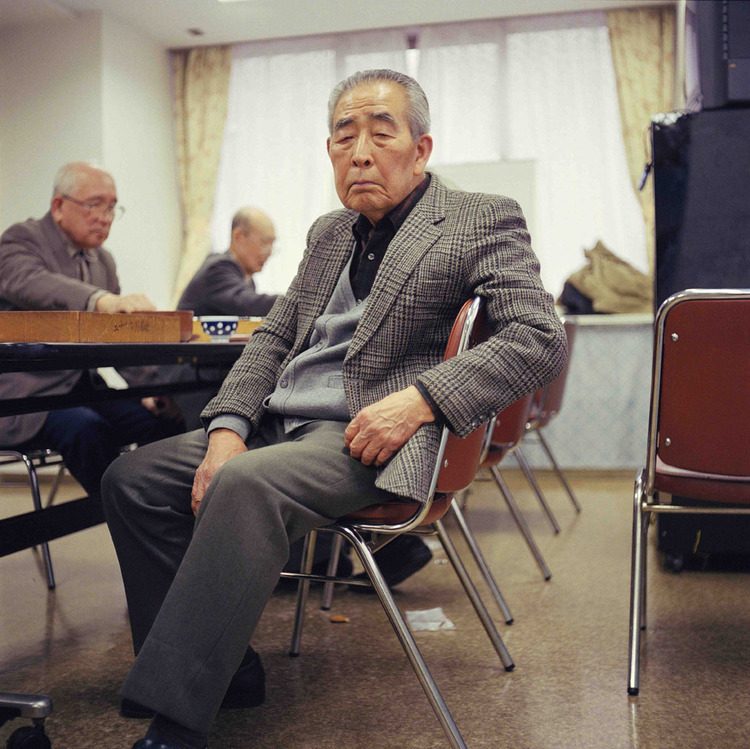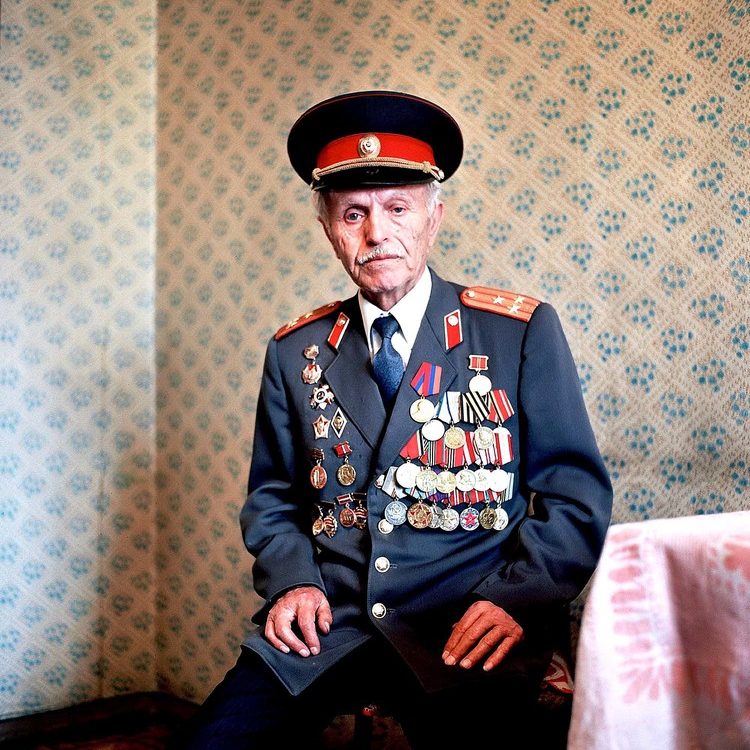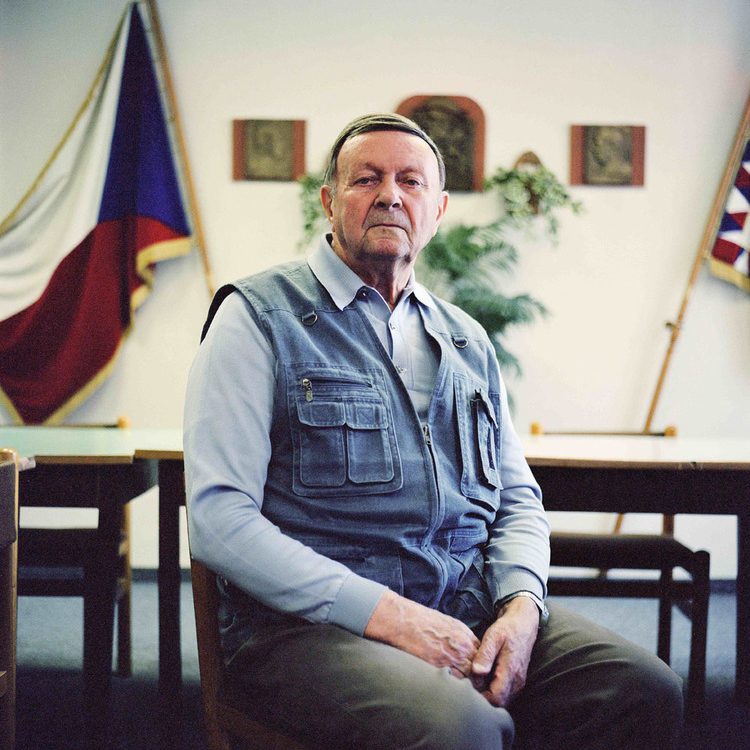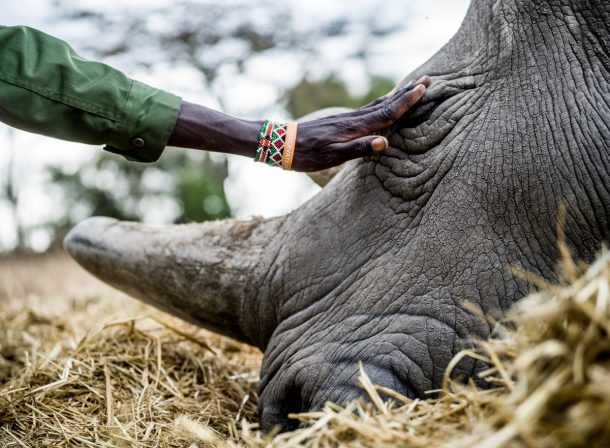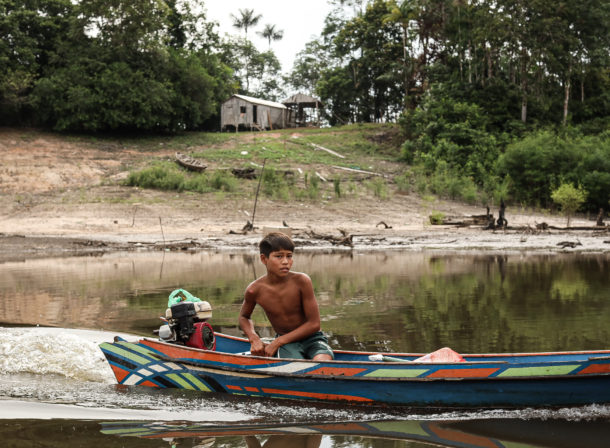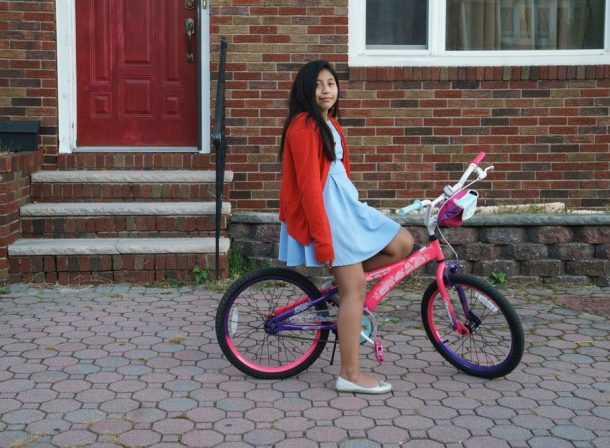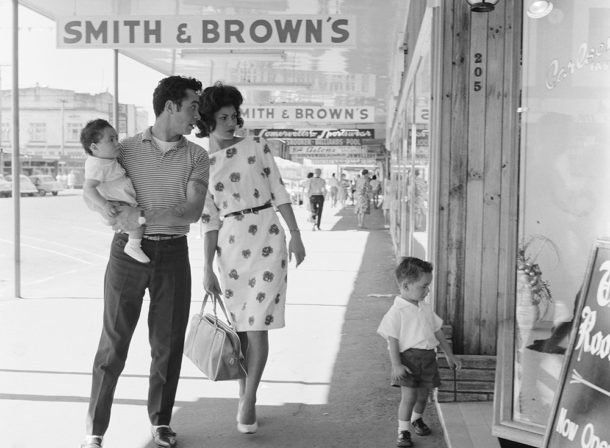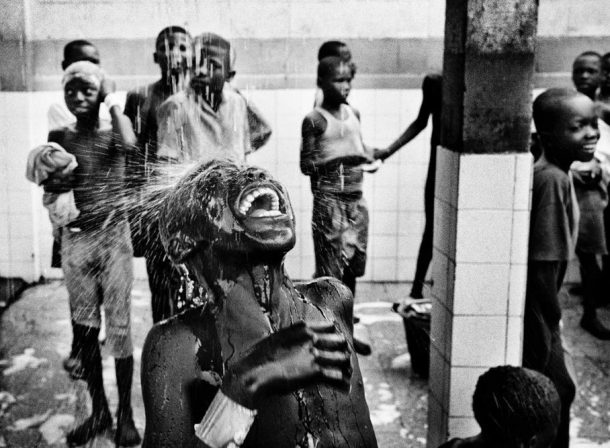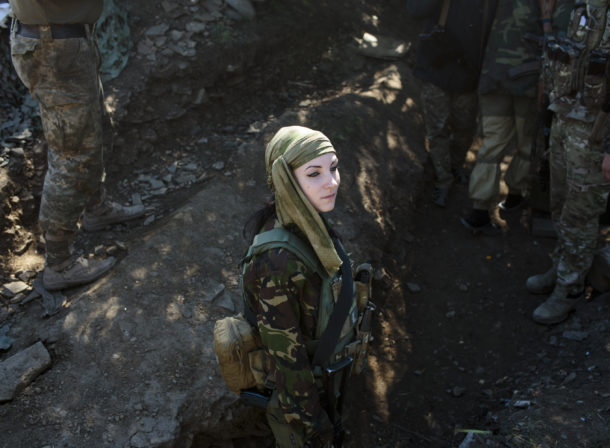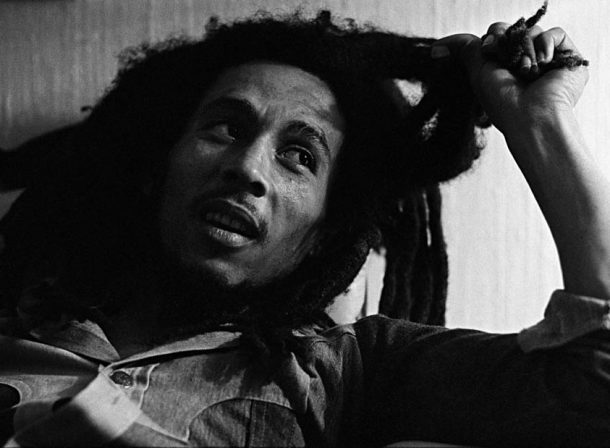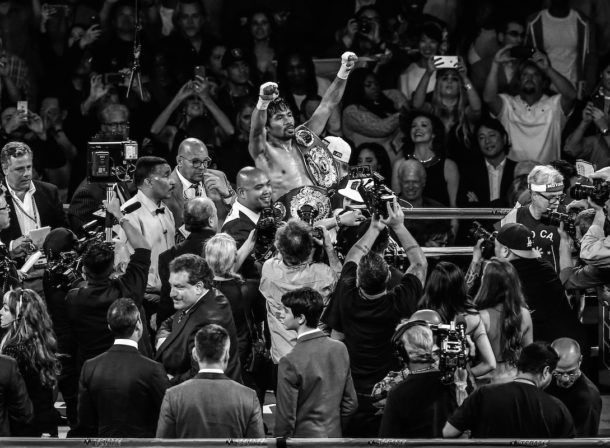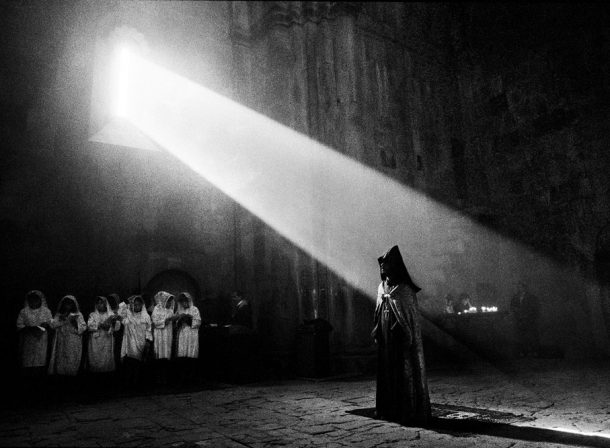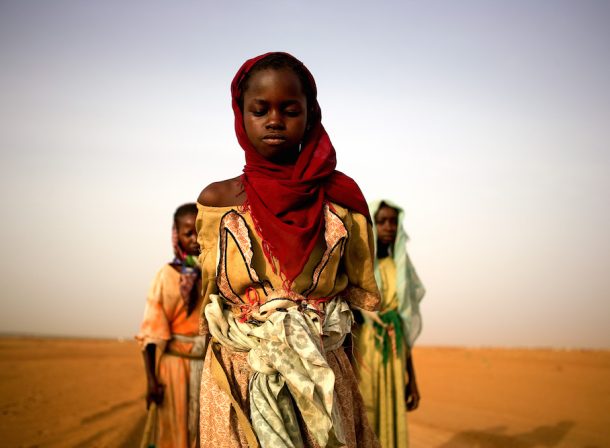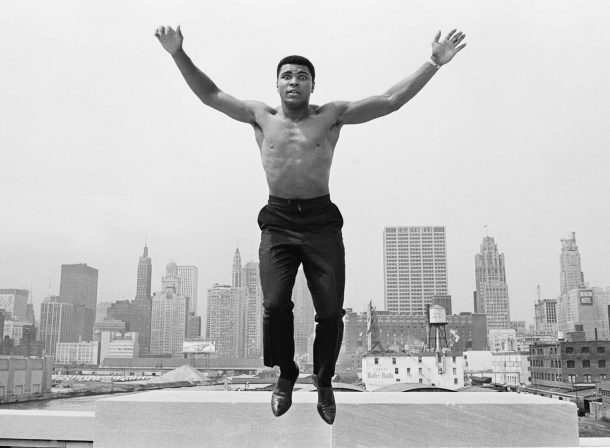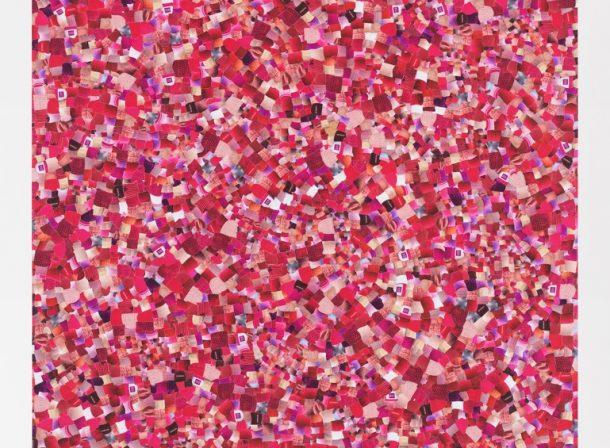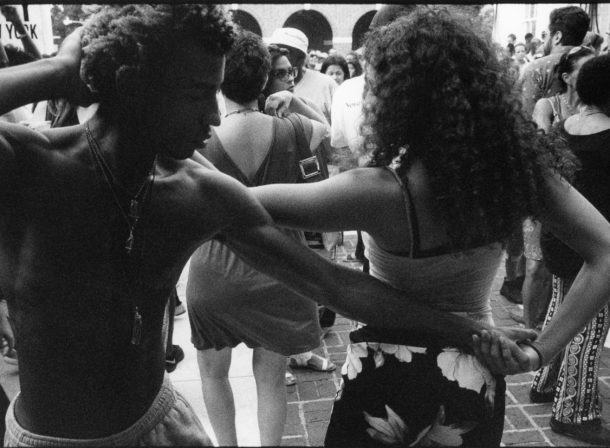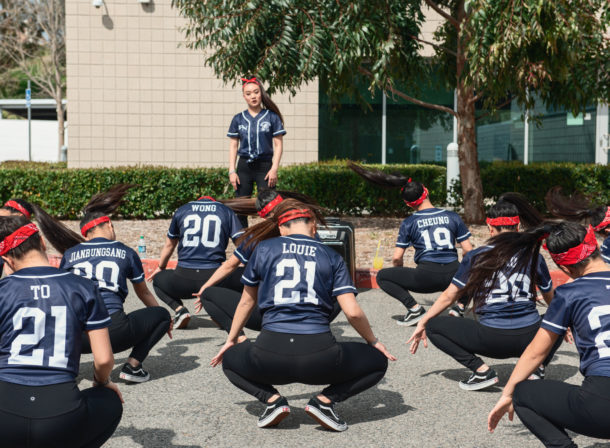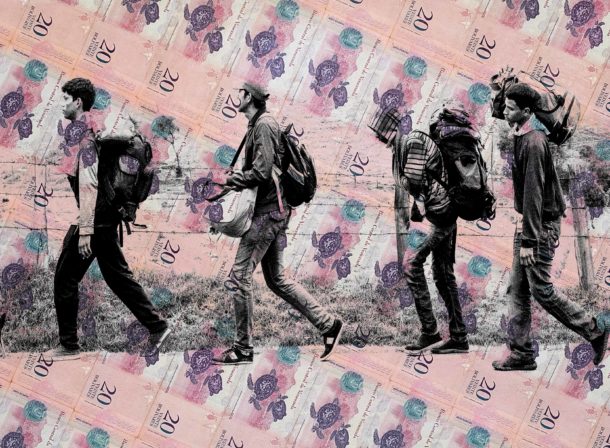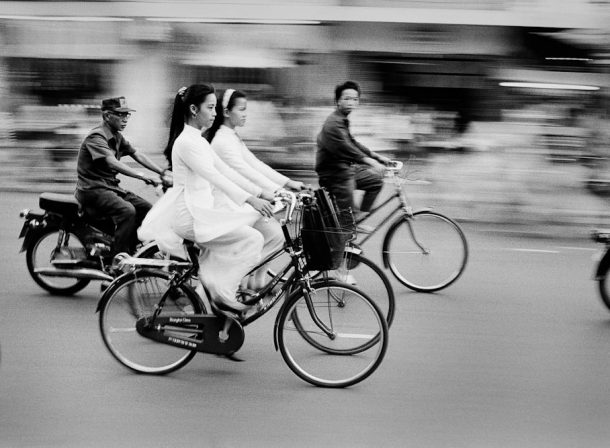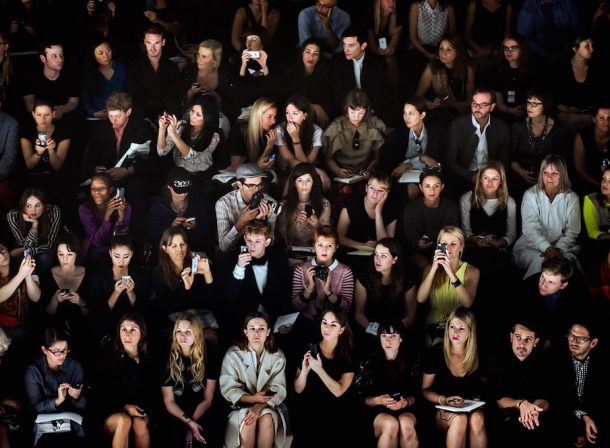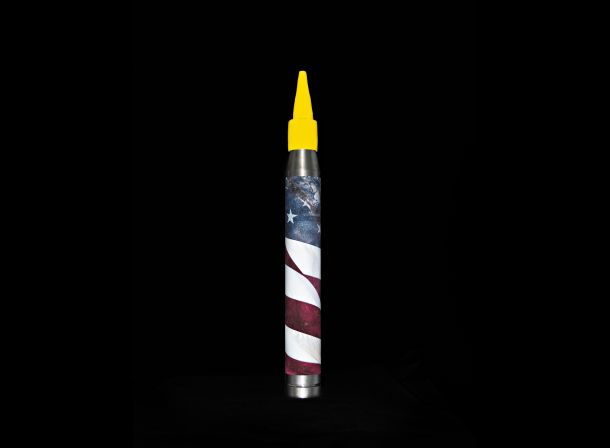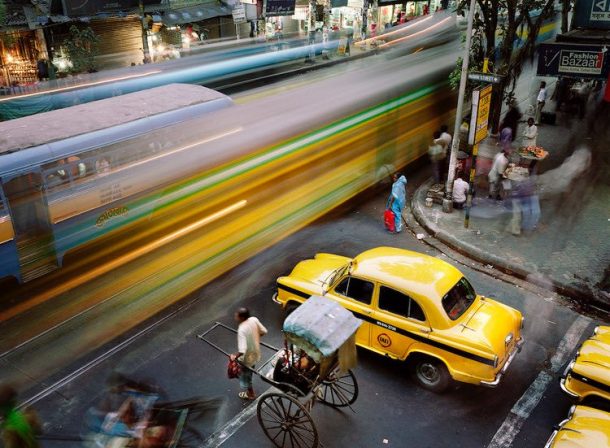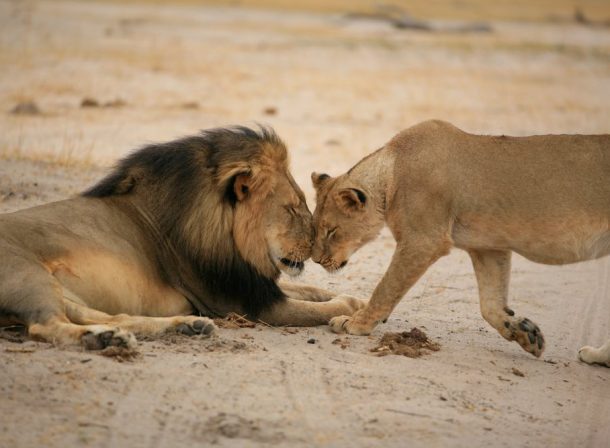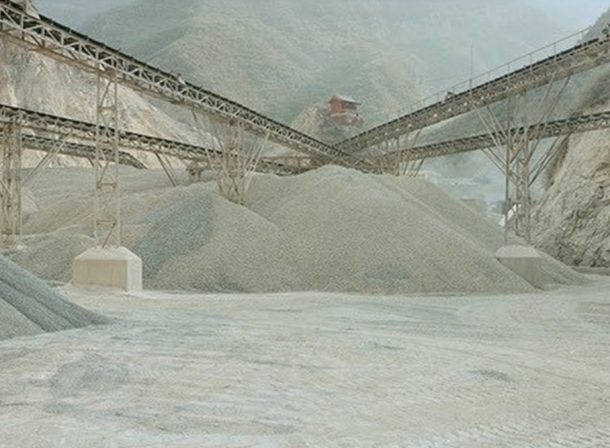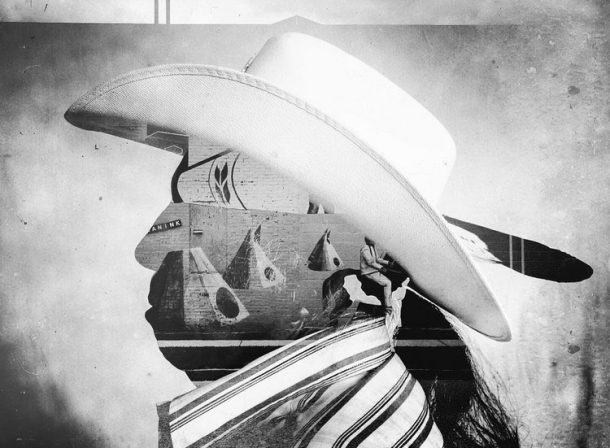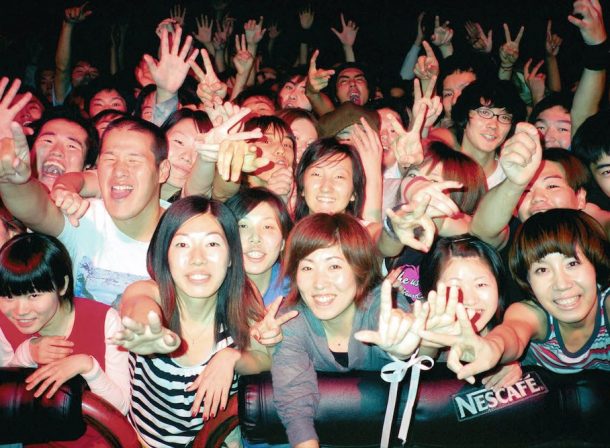
AMAZONAS
December 9, 2020 – February 20, 2021
This year, photographer Jonathan Alpeyrie traveled to the remote city of Manaus in Northern Brazil to photograph the pandemic’s effects on some of Brazil’s Indigenous tribes. During his time in Manaus, Alpeyrie visited tribal communities such as the Tuika, the Kokama and the Apurinã who live in and around the city, exploring how they have been affected by the pandemic, as well as the pernicious effect of modernity on their culture and environment.
Prior to colonization in 1500, Brazil was home to an estimated 2000 Indigenous tribes. Within the first century of colonization, an estimated 90% of the Indigenous population was wiped out thorough disease, genocide, and slavery. According to Survival International there are now only 305 tribes remaining, totaling 900,000 people or 0.4% of Brazil’s population. Their livelihoods are endangered through extensive industrialization and deforestation of the rainforest that historically has sustained them.
These tribal communities were hit hard by COVID-19 which has killed thousands in the region. As a result, local authorities prohibited outsiders from having any direct contact with tribes living in the jungle as they have no immunity to Introduced diseases. This policy, though partially successful, severely affected some tribes’ socio-economic systems which rely on selling goods to local markets as well as to visiting tourists.
Download Press Release
BIOGRAPHY
Born in Paris in 1979, Jonathan Alpeyrie moved to the United States in 1993. He graduated from the Lycée Français de New York in 1998 and went on to study medieval history at the University of Chicago, from which he graduated in 2003.
Alpeyrie began his photography career shooting for local Chicago newspapers during his undergraduate years. He shot his first photo essay in 2001 while traveling through the South Caucasus. After graduating, he went to the Congo to work on various essays, which led to a contributor contract with Getty Images in early 2004. In 2009, Jonathan became a photographer for Polaris images and SIPA press as well.
Alpeyrie’s career has brought him to over 25 countries and cover 13 conflict zone assignments, in the Middle East and North Africa, the South Caucasus, Europe, North America and Central Asia. A future photography book about WWII is in the works.
In 2013, whilst on assignment in Syria, Alpeyrie was kidnapped by rebel forces for 81 days. Alpeyrie was bound, blindfolded, and beaten by his captors. Over the course of his captivity, Alpeyrie kept his spirits up and strove to find the humanity in his captors. He took part in their activities, taught them how to swim, prayed with them, and tried learning their language and culture. He also discovered a dormant faith within himself, one that strengthened him throughout the ordeal. Alpeyrie’s 2014 Anastasia Photo exhibition Capture featured the images he shot on three trips to Syria prior to his abduction. In 2017, Simon & Schuster published his memoir The Shattered Lens.
Alpeyrie has worked as a freelancer for various publications and websites, such as the Sunday Times, Le Figaro magazine, ELLE, American Photo, Glamour, Aftenposten, Le Monde, BBC, and today he is a photographer for Polaris Images, with whom he signed in February 2010.
Alpeyrie’s work has been published in magazines such as Paris Match, Aftenposten, Times (Europe), Newsweek, Wine Spectator, Boston Globe, Glamour, BBC, VSD, Le Monde, Newsweek, Popular Photography, Vanity Fair, La Stampa, CNN, Bild Zeit, ELLE magazine, Der Speigel, Le Figaro, Marie Claire, The Guardian, Bild, and The Atlantic.
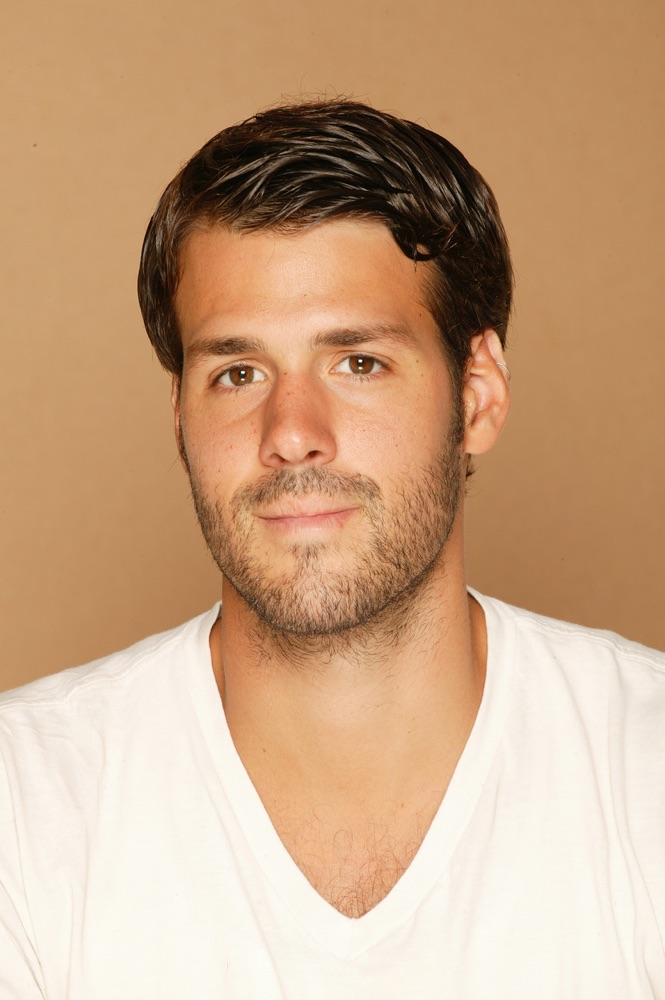
LAST JEWS OF CUBA
October 9-31, 2015
In 1945, about 25,000 Jews lived in Cuba. Today there are 1,500. Why do these few remaining still carry on as Cubans and as Jews? This is the fascinating story that Jonathan Alpeyrie tells in The Last Jews of Cuba.
The first Cuban Jews were predominantly Sephardic, having fled Spanish oppression in medieval Spain and Portugal. In the 1930s-40s, yet another branch of Jews fled Eastern Europe’s turmoil for a safe haven in Cuba. But with the arrival of Fidel Castro and Communism came an end to a free market economy and opportunities for professional growth and much of the community found themselves relocating to the United States for increased opportunities.
Never persecuted, Cuba’s remaining Jewish Community fared relatively well despite enforced Atheism across the country. Castro praised Jews for their commitment to preserving tradition, religion and culture. Consequently, it is said that half of Cuba’s remain- ing Jewish population is comprised of converts, given the preferential treatment of the community by the regime.
Today, the small community that remains in Havana plus its welcomed additions remains highly active in maintaining their common bond. Alpeyrie was commissioned by Anastasia Photo to research and photograph Havana’s remaining Jewish community as part of his long-term project exploring remaining Jewish enclaves in cities internationally.
CAPTURE
February 25—May 22, 2014
In 2011-12 Syrian security forces used tanks, gunfire and mass arrests to try to crush anti-government street protests inspired by the Arab Spring in Tunisia, Egypt and Libya. These protests rapidly took on a more formal nature when the opposition began to organize political and military wings for a long uprising against the Baath government headed by President Bashar al-Assad. As 2012 wore on, the standoff escalated into civil war, with defections from the governing elite signaling the steady collapse of central authority. Latest figures estimate the death toll at over 140,000 people, with a third of them being civilians. There are an estimated 6.5 million internally displaced persons within Syria and 2.4 million Syrians refugees displaced to neighboring countries.
Jonathan Alpeyrie was on his third trip to Syria covering an area near Damascus not well known to the general public when, on April 29, 2013, he fell into a trap and was abducted. During his 81 days of captivity, he was, at times, handcuffed to a bed “with five or six soldiers and two Islamists.” In his account told to Le Journal de la Photographie Alpeyrie does not say much about his release since “the French and American governments prefer it that way.”
He was freed, thanks to “a Syrian man close to the regime, a member of parliament and a businessman who was looking for Edouard Elias and Didier François (two French journalists who went missing in Syria on June 7th) who stumbled upon me.” The businessman paid a $450,000 ransom to free Alpeyrie on July 18th. “My kidnapping was about money,” he says. “As soon as they got what they wanted, they let me go.”
Alpeyrie notes the tendency in the West to root for the under dog. The few professional photographs that have come out of Syria’s battle zone show muddy desperate fighters, carrying a mixture of light weapons against entire tank battalions, holding on to a few cities like Idlib. These visuals support the portrayal of this grim affair the way we understand it: a losing battle. Alpeyrie asks if Syria will be more democratic if the rebels win? The examples of Libya, Egypt and Tunisia suggest otherwise. In Tunisia, the conservative Ennhada party won, Egypt is poised to have the Muslim Brotherhood in power, and Libya is already embroiled in ethnic fighting amongst the victors: there is no reason to think it would be different in Syria.
WWII VETERANS
April 11—May 31, 2012
The Second World War was fought by an entire generation of men from more than 60 nations. Jonathan Alpeyrie has made portraits of 223 veterans from 63 nations and documented their testimony of the war. This series is a powerful document of the men who fought on opposing sides during the war and this unique time in world history.

